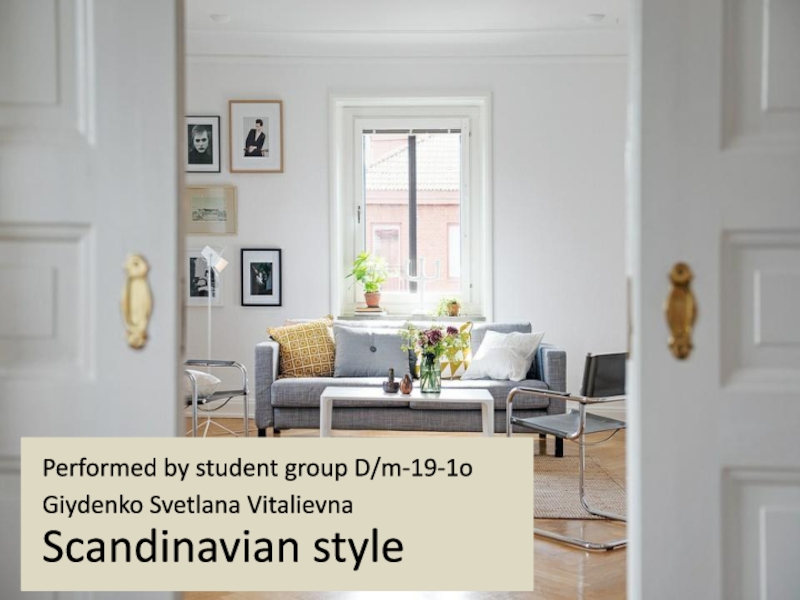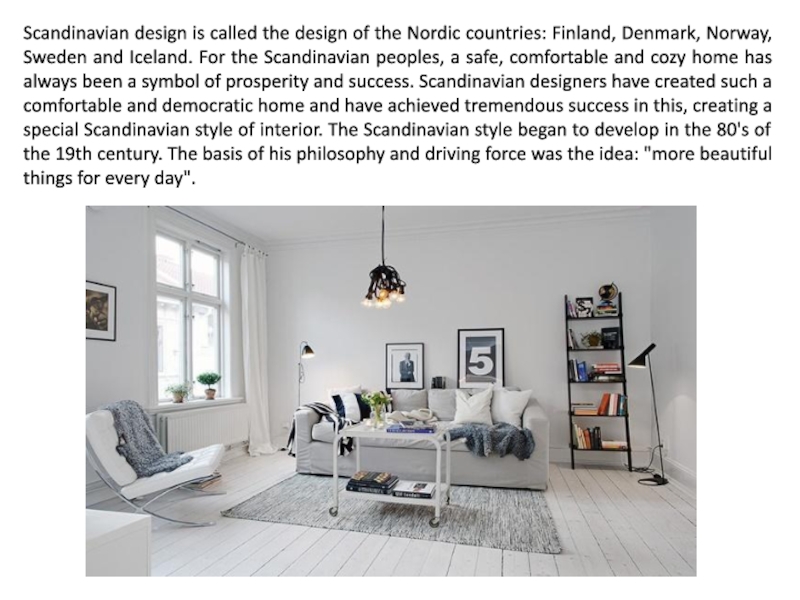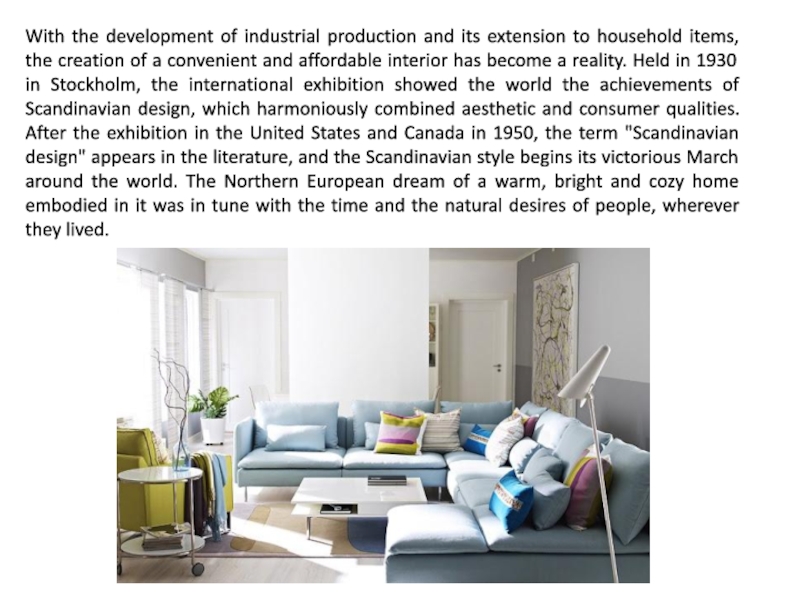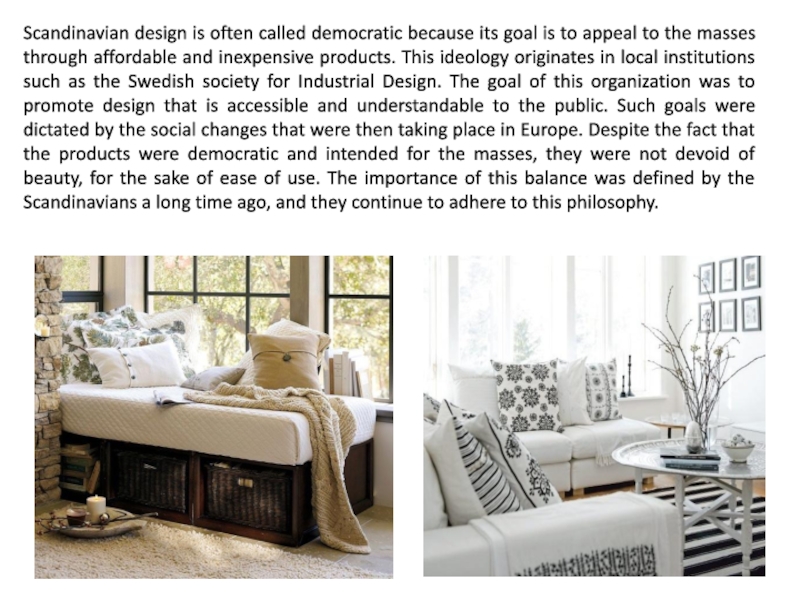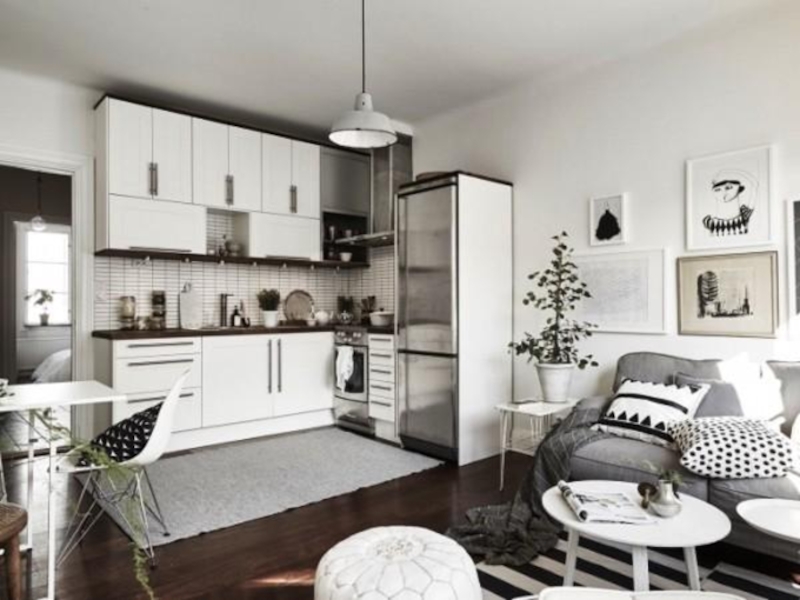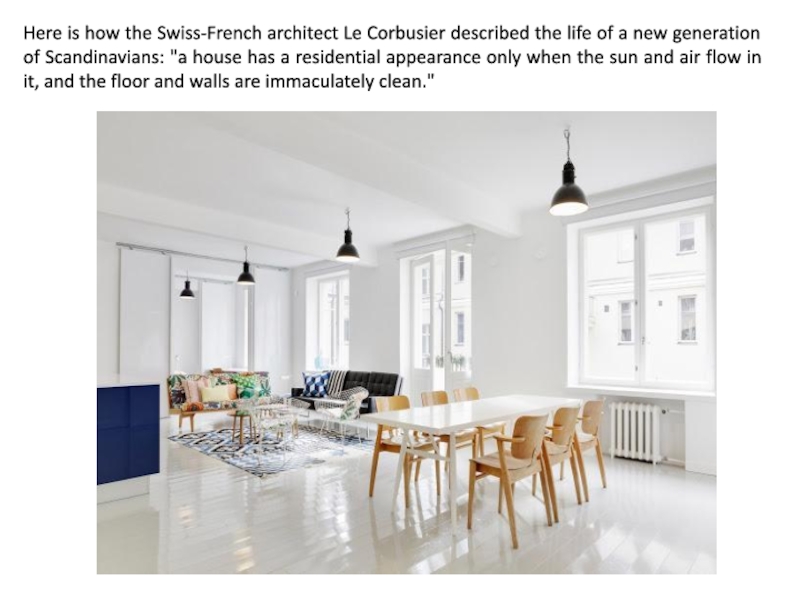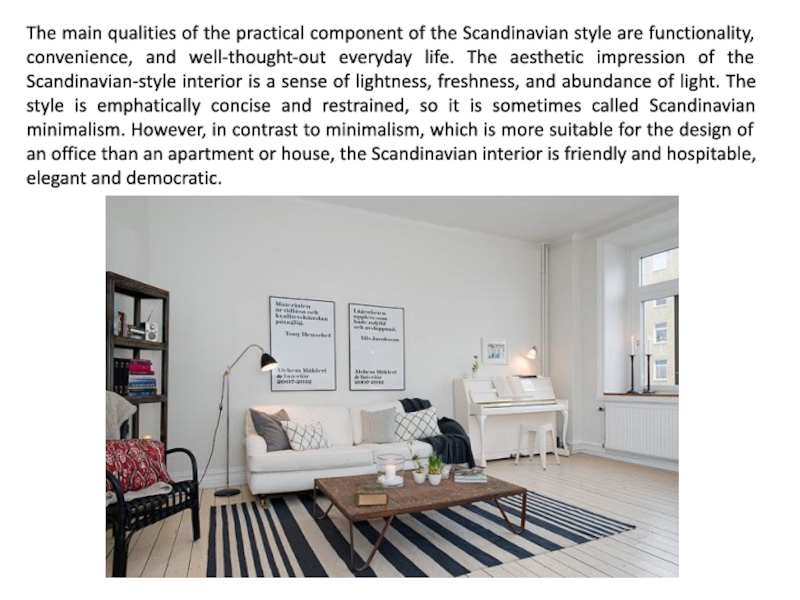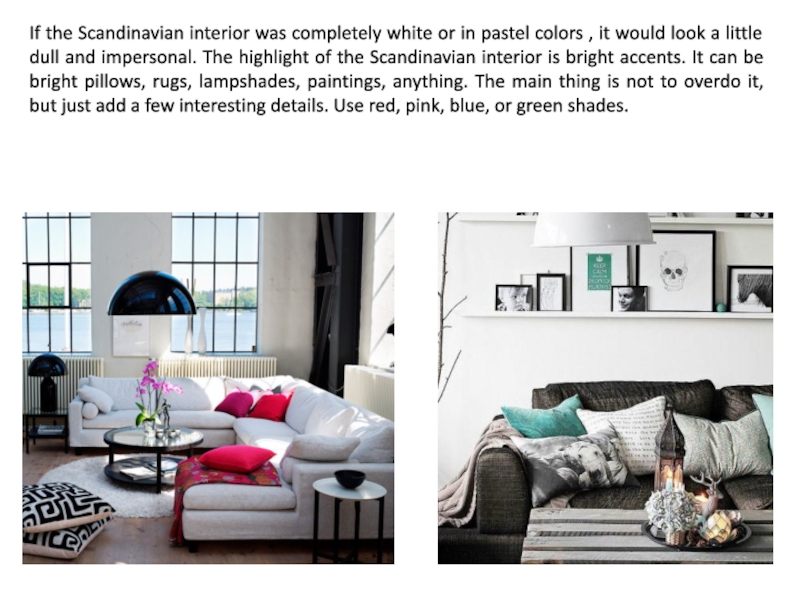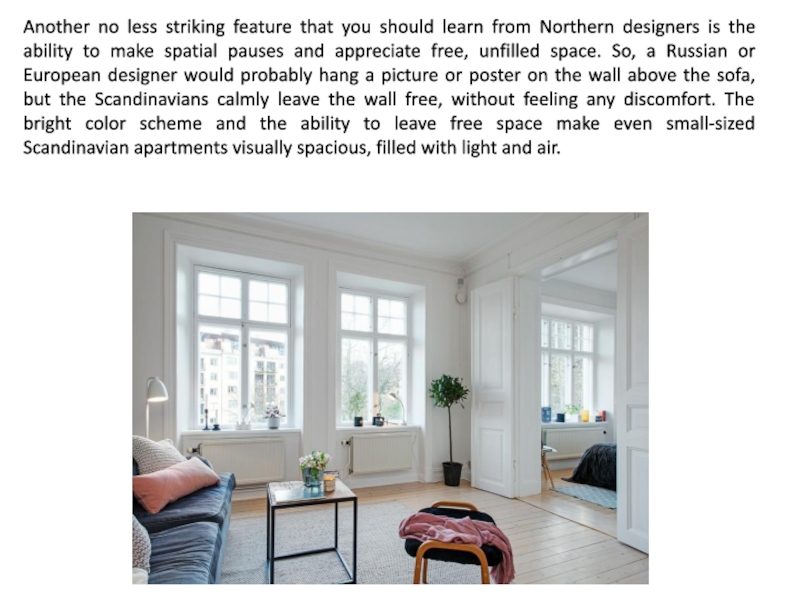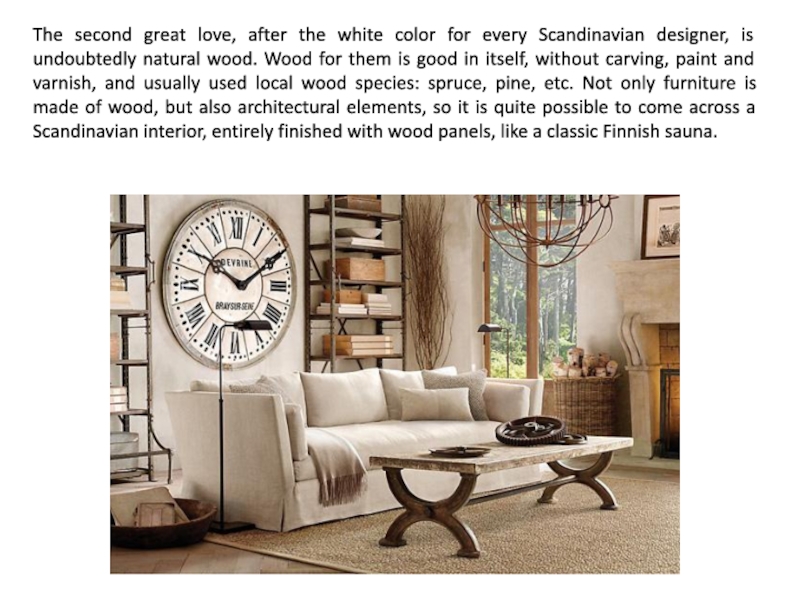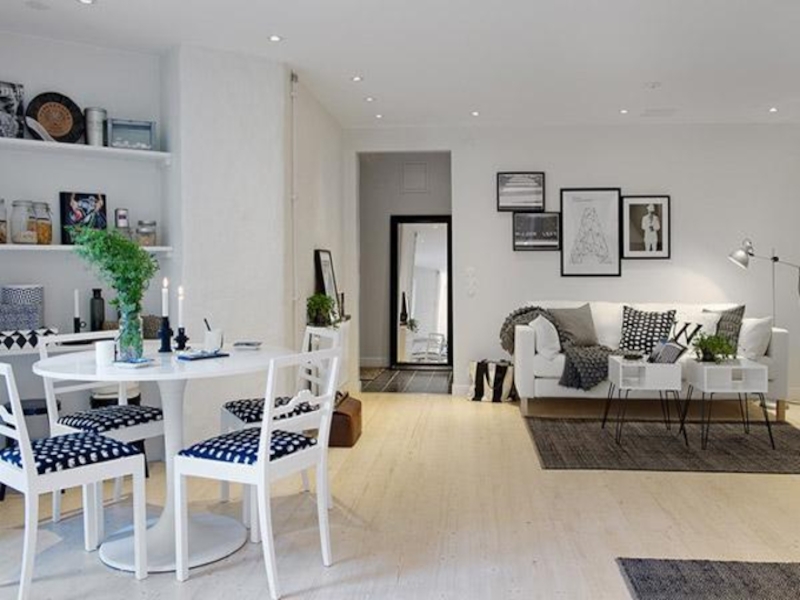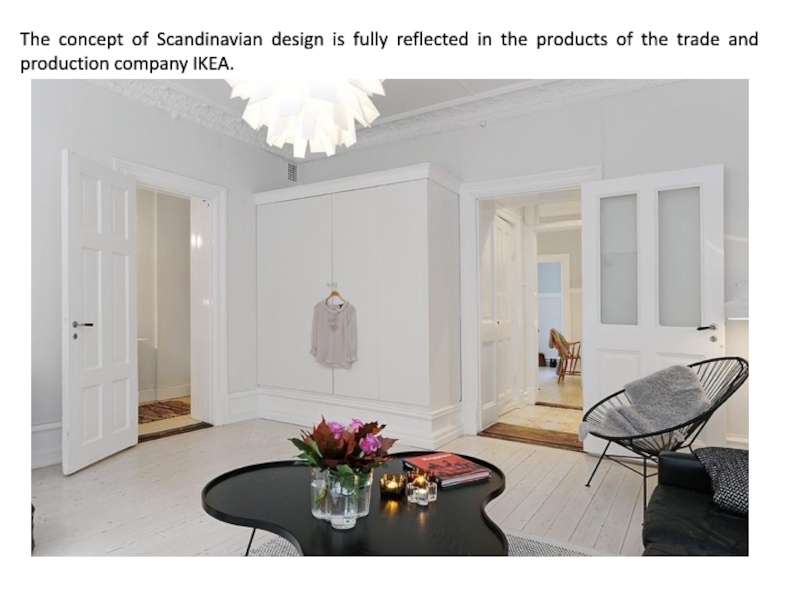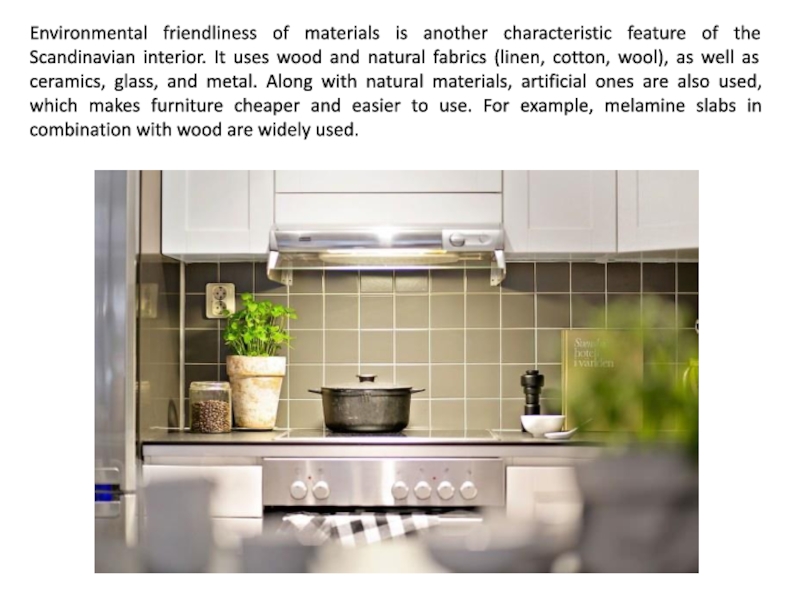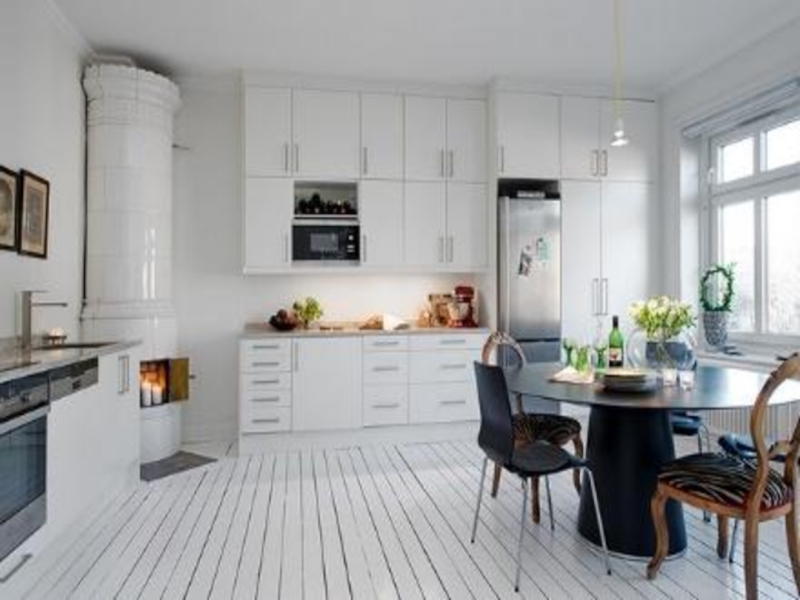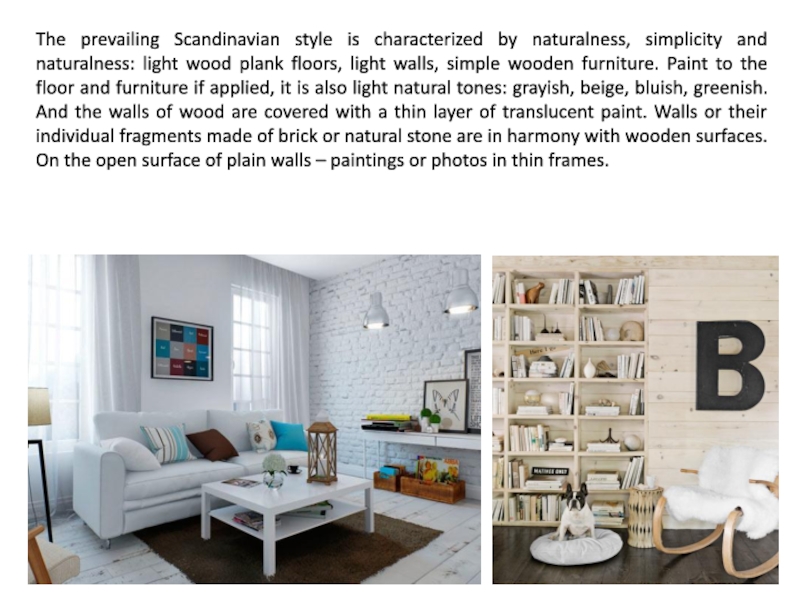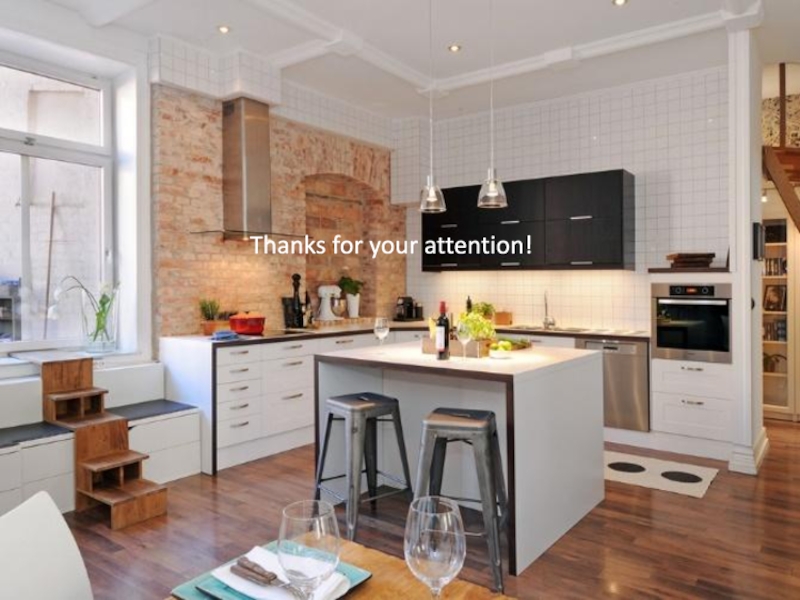Слайд 1Scandinavian style
Performed by student group D/m-19-1o
Giydenko Svetlana Vitalievna
Слайд 2Scandinavian design is called the design of the Nordic countries:
Finland, Denmark, Norway, Sweden and Iceland. For the Scandinavian peoples,
a safe, comfortable and cozy home has always been a symbol of prosperity and success. Scandinavian designers have created such a comfortable and democratic home and have achieved tremendous success in this, creating a special Scandinavian style of interior. The Scandinavian style began to develop in the 80's of the 19th century. The basis of his philosophy and driving force was the idea: "more beautiful things for every day".
Слайд 3With the development of industrial production and its extension to
household items, the creation of a convenient and affordable interior
has become a reality. Held in 1930 in Stockholm, the international exhibition showed the world the achievements of Scandinavian design, which harmoniously combined aesthetic and consumer qualities. After the exhibition in the United States and Canada in 1950, the term "Scandinavian design" appears in the literature, and the Scandinavian style begins its victorious March around the world. The Northern European dream of a warm, bright and cozy home embodied in it was in tune with the time and the natural desires of people, wherever they lived.
Слайд 4Scandinavian design is often called democratic because its goal is
to appeal to the masses through affordable and inexpensive products.
This ideology originates in local institutions such as the Swedish society for Industrial Design. The goal of this organization was to promote design that is accessible and understandable to the public. Such goals were dictated by the social changes that were then taking place in Europe. Despite the fact that the products were democratic and intended for the masses, they were not devoid of beauty, for the sake of ease of use. The importance of this balance was defined by the Scandinavians a long time ago, and they continue to adhere to this philosophy.
Слайд 6Here is how the Swiss-French architect Le Corbusier described the
life of a new generation of Scandinavians: "a house has
a residential appearance only when the sun and air flow in it, and the floor and walls are immaculately clean."
Слайд 7The main qualities of the practical component of the Scandinavian
style are functionality, convenience, and well-thought-out everyday life. The aesthetic
impression of the Scandinavian-style interior is a sense of lightness, freshness, and abundance of light. The style is emphatically concise and restrained, so it is sometimes called Scandinavian minimalism. However, in contrast to minimalism, which is more suitable for the design of an office than an apartment or house, the Scandinavian interior is friendly and hospitable, elegant and democratic.
Слайд 8If the Scandinavian interior was completely white or in pastel
colors , it would look a little dull and impersonal.
The highlight of the Scandinavian interior is bright accents. It can be bright pillows, rugs, lampshades, paintings, anything. The main thing is not to overdo it, but just add a few interesting details. Use red, pink, blue, or green shades.
Слайд 9Another no less striking feature that you should learn from
Northern designers is the ability to make spatial pauses and
appreciate free, unfilled space. So, a Russian or European designer would probably hang a picture or poster on the wall above the sofa, but the Scandinavians calmly leave the wall free, without feeling any discomfort. The bright color scheme and the ability to leave free space make even small-sized Scandinavian apartments visually spacious, filled with light and air.
Слайд 10The second great love, after the white color for every
Scandinavian designer, is undoubtedly natural wood. Wood for them is
good in itself, without carving, paint and varnish, and usually used local wood species: spruce, pine, etc. Not only furniture is made of wood, but also architectural elements, so it is quite possible to come across a Scandinavian interior, entirely finished with wood panels, like a classic Finnish sauna.
Слайд 11A very specific feature of Scandinavian design is the approach
to the design of window openings, which in our view
is virtually absent. In Denmark, Finland and Sweden, in principle, it is not accepted to hang curtains on the Windows, which for many seems strange and uncomfortable. However, the Windows do not remain unnoticed, and on the windowsill you must put beautiful lamps, interior accessories and hang decorative pendants and garlands.
Слайд 13The concept of Scandinavian design is fully reflected in the
products of the trade and production company IKEA.
Слайд 14Environmental friendliness of materials is another characteristic feature of the
Scandinavian interior. It uses wood and natural fabrics (linen, cotton,
wool), as well as ceramics, glass, and metal. Along with natural materials, artificial ones are also used, which makes furniture cheaper and easier to use. For example, melamine slabs in combination with wood are widely used.
Слайд 16The prevailing Scandinavian style is characterized by naturalness, simplicity and
naturalness: light wood plank floors, light walls, simple wooden furniture.
Paint to the floor and furniture if applied, it is also light natural tones: grayish, beige, bluish, greenish. And the walls of wood are covered with a thin layer of translucent paint. Walls or their individual fragments made of brick or natural stone are in harmony with wooden surfaces. On the open surface of plain walls – paintings or photos in thin frames.
